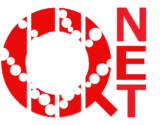Project Topics
1. Knowledge gaps in QWA
Moderator(s): Veronica De Micco, Ute Sass-Klaassen
Here a short description of the topic group is given


2. Protocols & standardized methods for QWA data production
Moderator(s): Marco Carrer, Holger Gärtner, Emanuele Ziaco
Here a short description of the topic group is given
3. Data harmonization across databases
Moderator(s): Martin de Luis, Patrick Fonti
Here a short description of the topic group is given


4. Online toolbox for data analysis
Moderator(s): Richard Peters
Processing wood anatomical data is challenging (i.e., due to labour-intensive data cleaning). Instead of “re-inventing the wheel” for each analyses, the community should combine efforts to collate and standardize existing tools, and guide future developments. This will save time and ensure comparability across studies. We ask: which tools support your workflows, which are missing, and how do we ensure access, visibility and best practices for a wood anatomy toolbox?
5. Identification of structure-function relationships & relevant functional traits
Moderator(s): Steven Jansen, Lenka Plavkova
Structure-functional relationships of xylem play an important role in long-distance water transport, storage, defence, and biomechanical properties of various plants organs. Functional aspects of xylem have implications to photosynthesis, carbon fixation, growth, longevity, and resistance to a wide range of biotic and abiotic stresses. We will discuss novel methods, and how interdisciplinarity could provide an exciting opportunity to address some of the longstanding questions in plant biology.


6. Linking QWA with other data & proxies
Moderator(s): Jesper Björklund, Stefan Mayr, Giovanna Battipaglia
Wood formation is a complex process influenced by several intrinsic and environmental factors occurring during tree growth. QWA in combination with other proxies, such as stable isotope or wood density analyses, or other data, such as information on mechanics or hydraulics, thus enable insights into structural and functional traits with respect to past conditions as well as projections to future developments.
7. Analysing wood anatomical time series
Moderator(s): Daniele Castagneri
Structure-functional relationships of xylem play an important role in long-distance water transport, storage, defence, and biomechanical properties of various plants organs. Functional aspects of xylem have implications to photosynthesis, carbon fixation, growth, longevity, and resistance to a wide range of biotic and abiotic stresses. We will discuss novel methods, and how interdisciplinarity could provide an exciting opportunity to address some of the longstanding questions in plant biology.


8. Modelling & QWA: from cell to ecosystem
Moderator(s): Antoine Cabon, Alberto Arzac
Here a short description of the topic group is given
9. Wood technology & QWA: from dimensional measurements to biomechanics
Moderator(s): Alan Crivellaro, Katarina Cufar
Wood is a remarkable material appearing in a variety of patterns and used in many technological applications. Wood properties depend on its three-dimensional cellular structure and on a variety of minute details of its cells. Quantitative Wood Anatomy (QWA) allows exploring wood complexity by integrating microscopic traits at the cell level with wood properties, the whole plant and the environment.


10. Xylogenesis & QWA: from counting to measuring
Moderator(s): Cyrille Rathgeber, Peter Prislan
Here a short description of the topic group is given
11. Developing next-generation tools for quantification of anatomical structures
Moderator(s): Martin Wilmking, Jose Miguel Olano
Quantitative wood anatomy is a robust method to investigate xylem adjustments to the environment. QWA advance is hampered by a time-consuming methodology. Main challenges include 1) the massive preparation of high quality thin-sections, 2) acquisition of digital images, and 3) the quantification of wood anatomical parameters. Our session will focus on the development next-generation tools for QWA: automated sample preparation, image processing and machine learning methods for image analysis.

